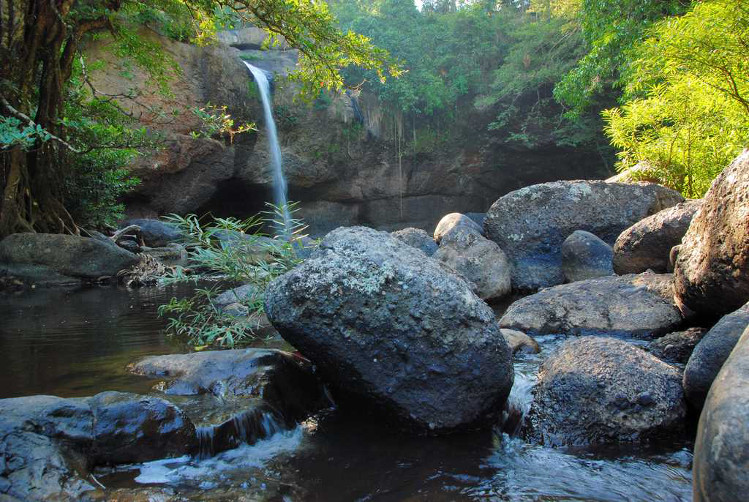
There is perhaps no better way to appreciate Thailand than its raw, natural state, and with more than 100 national parks dotted around the country, there are plenty of options to do so. The kingdom's first protected swathe of jungle, Kho Yai National Park, is also its most popular. With around 50 kilometres of hiking trails, you can choose from easy rambles to more challenging multi-day treks led by a park ranger. The park is home to a vast expanse of increasingly rare monsoon rainforest and some of Thailand's last remaining wild tigers, gibbons and elephants. And with almost 400 species of bird, it’s a twitcher’s paradise.
Khao Sok National Park in southern Thailand is another top pick. One of the oldest evergreen rainforests in the world, it also provides a haven for a host of wildlife, including Asian black bears, leopards and several species of monkey. Many of these animals are notoriously elusive, but there is plenty more to see – set on the eastern slopes of the Tenasserin Mountain Range, the park’s heavy rainfall creates spectacular waterfalls.
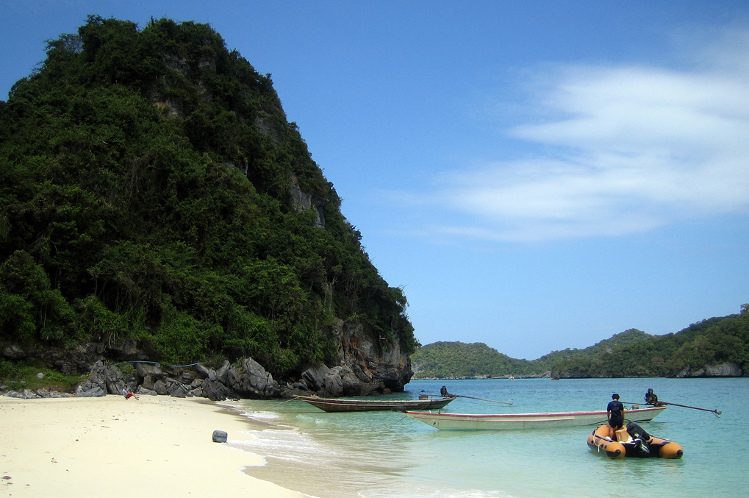
The inspiration behind cult backpacker film The Beach, Ang Thong National Marine Park is an archipelago of 42 jewel-like islands and limestone karsts, around 30 kilometres west of Ko Samui. Once a hangout for pirates, its pristine beaches and coral reefs are now protected and a shelter for dolphins and sea otters, as well as birds, including swiftlets, whose homes are the main ingredient in bird’s nest soup. For more information on Thailand’s parks see Department of National Parks (dnp.go.th/parkreserve).
When visiting national parks in Thailand or elsewhere, be sure to take out everything you bring in, and resist the temptation to pocket a souvenir (including seashells) or feed wild animals, which can make them aggressive (especially monkeys).
For many years, riding an elephant in Thailand was synonymous with the visitor experience. However, there is now growing evidence to prove that the practice is harmful for the pachyderms, with elephant charities comparing it with poaching and the ivory trade in terms of impact. While nothing beats the thrill of spotting an elephant in the wild, fortunately there are a growing number of elephant sanctuaries in Thailand that offer more ethical interactions such as walking with and bathing the gentle giants. For a roundup of Thailand's more sustainable operators, see Lonely Planet’s guide to interacting ethically with elephants in Thailand.
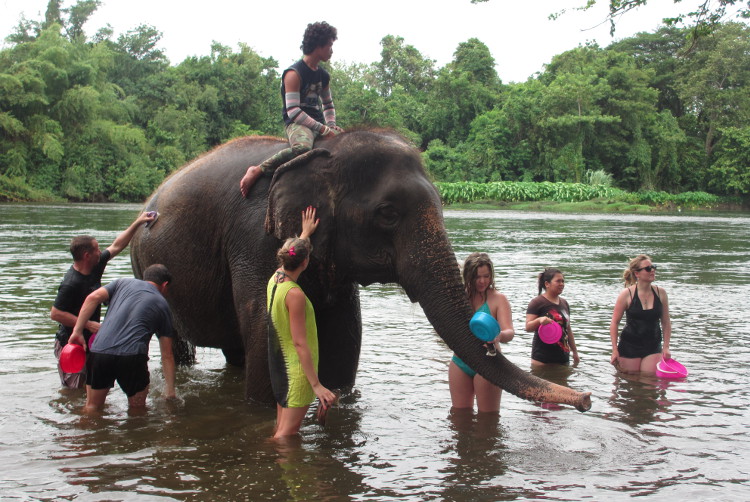
If you've always wanted to get up close and personal with a tiger, it's also worth reading up on the disturbing animal welfare issues involved. Animal welfare groups have condemned popular Thai operations such as Tiger Temple (Kanchanaburi) and Tiger Kingdom (Phuket), and called for the animals to be housed in much larger enclosures and to stop all physical contact between them and visitors. Often billed as ‘sanctuaries’, tiger petting zoos have not only been linked with the illegal wildlife trade and animal abuse, but also present great risk to visitors – an Australian tourist was seriously mauled at Tiger Kingdom in 2014, while a monk was attacked by a tiger in his ‘care’ at the Tiger Temple in 2015.
Thailand’s gibbons have also paid the price for what many tourists consider a harmless happy snap – more than half of Thailand's white-handed gibbon population has been wiped out in the past 30 years, with babies taken from their mothers to be kept as pets and pimped out as photo props. The Gibbon Rehabilitation Project (GRP), set in tropical forest around the Bang Pae waterfall in Phuket, rescues abandoned and mistreated animals and helps them return to the freedom of the forest. Swing by to see these adorable, acrobatic gibbons in action before they’re released (sadly, depending on their injuries, not all of them can be) or go a step further and volunteer with GRP or other local organisations, such as Soi Dog (soidog.org), also in Phuket. Asia's largest animal foundation, Soi Dog works with domestic animals and has sterilised and vaccinated over 81,500 dogs and cats to date, making Phuket officially rabies-free.
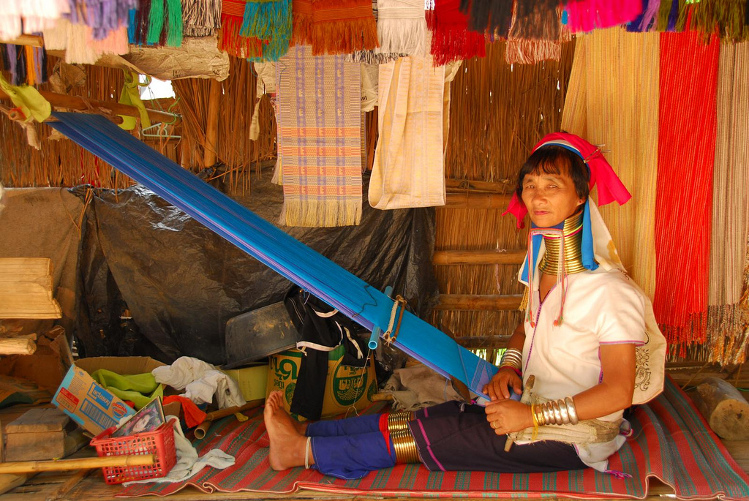
Agriculture has been a major part of the Thai way of life for centuries. And thanks to a growing number of agrotourism projects, you can try your hand at everything from bringing home the catch-of-the-day to helping with the rice harvest. Doi Inthanon National Park in Chiang Mai Province is home to Thailand’s highest peak and some of its most spectacular scenery. It’s also home to one of the pioneering Royal Projects set up by King Bhumibol Adulyadej. His aim was to encourage the Karen Thai and Hmong hill tribes to switch from an opium crop to legal and more lucrative produce, and visitors wanting to help can stay at the Royal Agricultural Station Inthanon (royal-inthanon.com) or at a homestay in a nearby village. At Chiang Rai’s Ban Mae Chan Tai Agro-tourism Centre (akhaama.com), the three-day Coffee Journey will take you from bean to cup, as well as giving you an insight into the lives of the coffee farmers. And on a tour of Jim Thompson Farm (jimthompsonfarm.com) in northeastern Thailand (held from mid-December to mid-January every year) you’ll learn about the life cycle of the silkworms and the silk farming process.
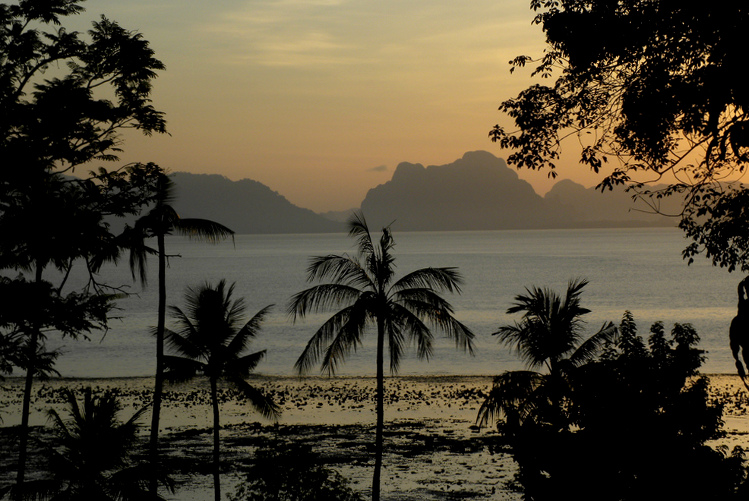
Opting for a homestay over a big resort (even for just a portion of your visit) will give you the chance to experience a more traditional way of life in Thailand. It also puts control over tourism back into the hands of the locals, along with your Baht (if organised through the right people). The Community Based Tourism Institute (cbt-i.org) has helped set up numerous homestay projects around the country, offering stays on a hill tribe farm in the north to a fishing village in the south. On the unspoilt island of Koh Yao Noi, just a ferry-hop from Phuket, the project has helped fund a successful local conservation campaign, forcing factory ships to fish elsewhere.
Homestay accommodation can be basic but you don’t have to sacrifice luxury to be eco-friendly. Behind the five-star service at the Six Senses Yao Noi, there’s an impressive sustainability programme in place, including clean water, waste recycling, tree planting and educational projects. Even among the skyscrapers of Bangkok you can find a sustainable place to stay. The Bangkok Tree House is a boutique hotel built on stilts on the island of Phra Pradaeng, known as the city's 'green lung', where you can cycle with the locals along raised walkways and enjoy a more relaxed slice of city life.